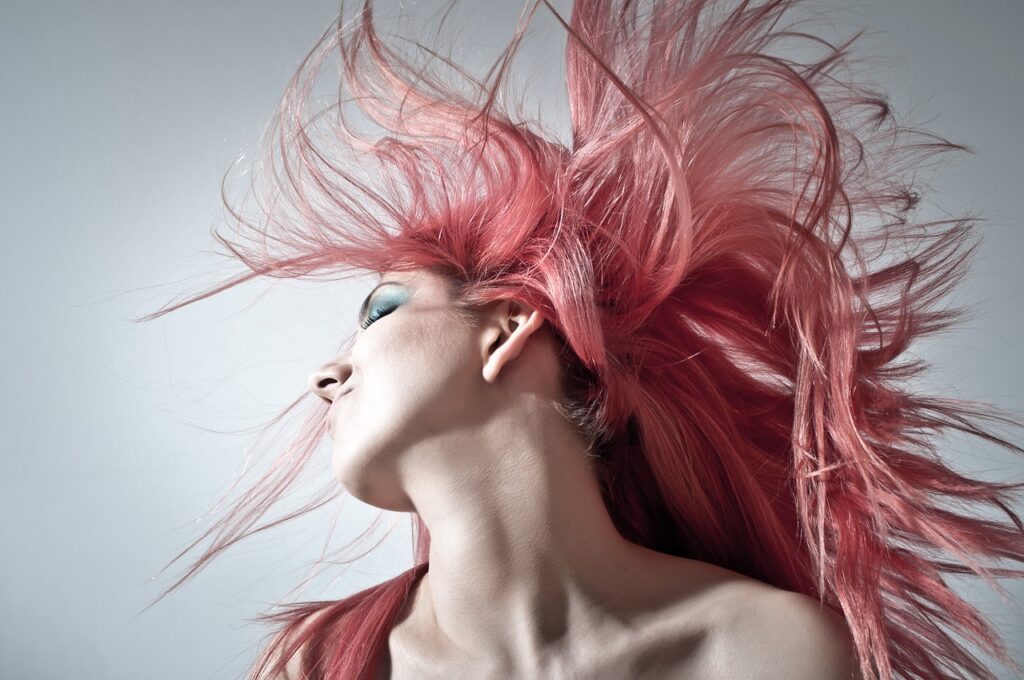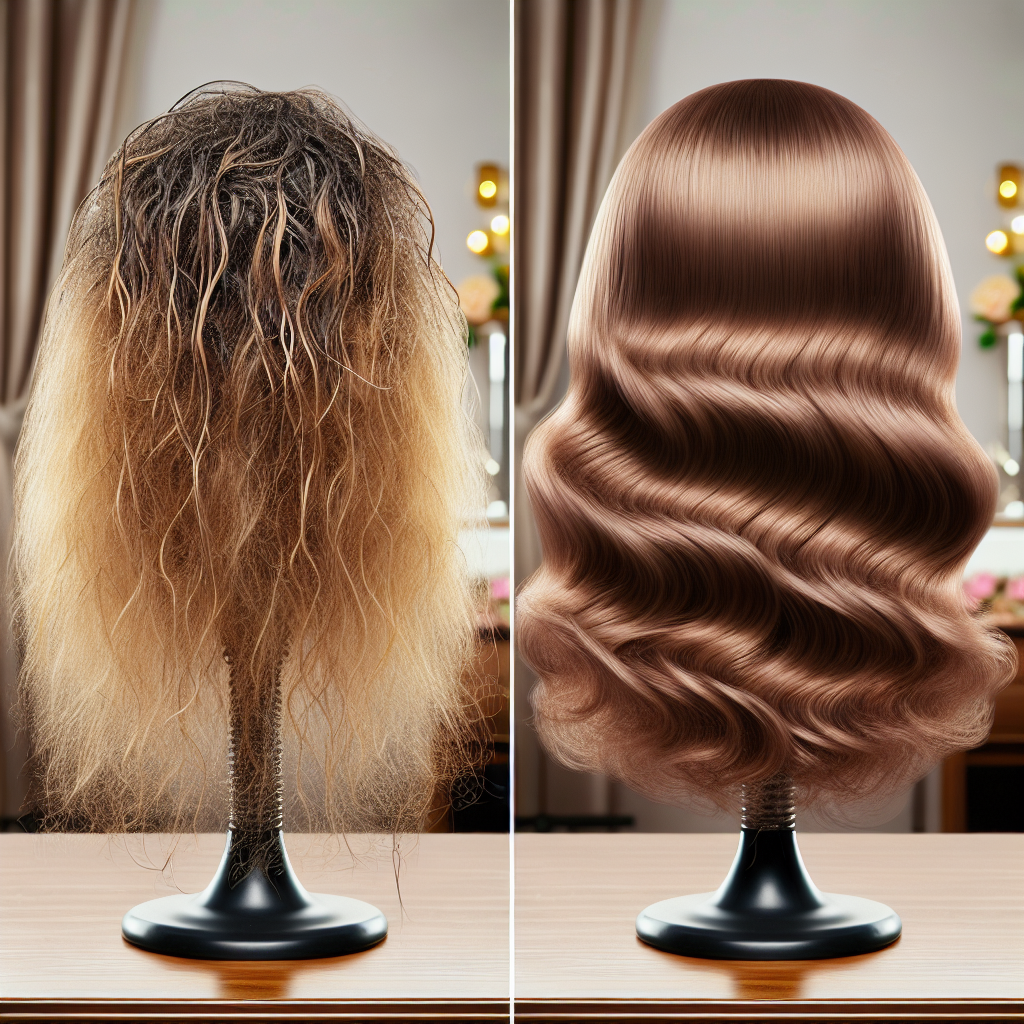So you’ve invested in a beautiful human hair wig, but over time, it has lost its luster and now looks dull and lifeless. Don’t worry, we’ve got you covered! In this article, we will share with you some tried and tested tips for reviving the look of your human hair wig, so you can enjoy its natural beauty and shine once again. Whether you’re dealing with tangled locks, frizz, or lack of volume, these tips will have your wig looking as good as new in no time, boosting your confidence and making you feel fabulous.
Tips for Reviving the Look of a Human Hair Wig
Are you looking to revive the look of your human hair wig? Whether it’s a daily wig or a special occasion piece, over time, wigs can lose their luster and need a little extra care. But fear not! With the right techniques and a little TLC, you can bring your wig back to life and make it look as good as new. In this article, we will walk you through some tips and tricks that will help you to maintain and restore the beauty and freshness of your human hair wig.
Cleaning and Washing
One of the first steps in reviving the look of your human hair wig is to properly clean and wash it. Regular cleaning is essential to remove dirt, oil, and product buildup, which can make your wig look dull and lifeless.
Choosing the Right Shampoo
When it comes to selecting a shampoo for your human hair wig, it’s crucial to choose one that is specifically designed for wigs. Look for a gentle, sulfate-free shampoo that is formulated to clean without stripping away the natural oils from the hair. Avoid using regular hair care products, as they may contain harsh chemicals that can damage the wig fibers.
Pre-Washing Preparation
Before washing your wig, it’s important to remove any tangles or knots gently. Use a wide-toothed comb or your fingers to detangle the wig, starting from the ends and working your way up. This will prevent any further damage to the hair and make the washing process more manageable.
Washing the Wig
Fill a basin or sink with lukewarm water and add a small amount of wig shampoo. Gently swish the wig in the water, making sure to distribute the shampoo evenly. Avoid rubbing or twisting the hair, as this can cause tangling or shedding. Rinse the wig thoroughly with clean water until all the shampoo is removed.
Drying the Wig
After washing, gently blot the excess water from the wig using a clean towel. Avoid wringing or twisting the hair, as this can cause damage. Place the wig on a wig stand or a towel-covered surface to air dry. Avoid using direct heat from blow dryers or styling tools, as it can cause the hair to become brittle or frizzy. Allow the wig to dry completely before styling or storing.

Deep Conditioning
To restore moisture and shine to your human hair wig, deep conditioning is a crucial step. Deep conditioning helps to replenish the hair with essential nutrients and moisture, improving its overall appearance and manageability.
Applying a Deep Conditioner
After washing and towel drying your wig, apply a generous amount of deep conditioner to the hair. Massage the conditioner into the strands, focusing on the mid-lengths and ends. Avoid applying conditioner directly to the roots, as this can weigh down the hair and make it appear greasy. Leave the conditioner in for the recommended amount of time, as specified on the product label.
Using Heat or Steam
For an extra nourishing boost, you can use heat or steam to help the deep conditioner penetrate the hair shafts. Place a shower cap over the wig or wrap it in a warm, damp towel. You can also use a portable steamer to gently steam the wig, which will open up the hair cuticles and allow the conditioner to penetrate deeply. Leave the heat or steam on for the recommended time, as specified by the deep conditioner’s instructions.
Rinsing and Drying
After the deep conditioning treatment, rinse the wig thoroughly with cool water to seal the cuticles and lock in the moisture. Gently squeeze out any excess water and pat dry with a clean towel. Allow the wig to air dry completely before styling or storing.
Detangling
Tangles and knots can make your wig appear messy and unkempt. Proper detangling techniques are essential to keep your wig looking smooth, shiny, and tangle-free.
Gentle Brushing
Start by gently brushing the wig using a wide-toothed comb or a wig brush specifically designed for detangling. Begin at the ends of the hair and work your way up, using short, gentle strokes. Avoid pulling or yanking the hair, as this can cause breakage or shedding. Gradually work through any knots or tangles until the hair is smooth and tangle-free.
Using Detangling Sprays
If you encounter stubborn tangles or knots, you can use a detangling spray or wig-specific conditioner to help loosen them. Simply spray the detangling product onto the tangled area and use your fingers or a wide-toothed comb to gently work through the knots. Be patient and take your time to avoid causing any damage to the hair.
Working in Sections
If your wig has extensive tangles, it’s helpful to divide the hair into small sections and detangle them one at a time. This approach allows you to focus on each section without overwhelming the entire wig. Start at the bottom and work your way up, ensuring that each section is fully detangled before moving on to the next one.
Avoiding Excessive Force
When detangling your wig, remember to be gentle and avoid applying excessive force. Human hair wigs are delicate and can be easily damaged if handled roughly. Take your time, use a light touch, and be patient to avoid unnecessary breakage or shedding.
Finishing Touches
Once you have successfully detangled your wig, give it a final brush-through to ensure that all the knots and tangles are removed. Use a wig brush or a wide-toothed comb to gently smooth the hair, starting from the roots and working your way down to the ends. Your wig should now be free of tangles and ready to be styled.

Restyling
Restyling your human hair wig can breathe new life into its appearance. Whether you want to change your look entirely or simply freshen up your current style, there are several restyling options to consider.
Straightening
If your wig has a natural wave or curl pattern that you wish to change, you can use heat styling tools to straighten it. Set your flat iron to a low to medium heat setting, as excessive heat can damage the hair fibers. Divide the hair into small sections and gently run the flat iron through each section, starting from the roots and working your way down. Remember to use a heat protectant spray before applying the flat iron to prevent heat damage.
Curling or Waving
To add curls or waves to your wig, you can use either hot rollers, curling irons, or a curling wand. For a more natural look, opt for larger barrel sizes. Wrap small sections of hair around the curling iron or wand, holding for a few seconds before releasing. Once all sections are curled, use your fingers or a wide-toothed comb to gently separate and define the curls.
Creating Updos
Updos are a versatile and elegant way to restyle your wig. From chic buns to intricate braided updos, the possibilities are endless. Use bobby pins, hair elastics, and styling tools to create your desired updo. Secure the hairstyle in place with hairspray or a lightweight styling gel to ensure that it lasts all day.
Braiding or Twisting
Braids and twists are another fabulous option for restyling your wig. Whether you prefer a classic French braid or trendy box braids, braiding or twisting your wig can give it a fresh and fashionable look. Divide the hair into sections and braid or twist each section, securing the ends with small rubber bands or hairpins. For added texture and hold, apply a small amount of styling gel or holding spray to the hair before braiding.
Adding Accessories
Accessories can instantly transform the look of your wig. From headbands and scarves to barrettes and hair clips, there are countless options to choose from. Experiment with different accessories to find the ones that complement your personal style and enhance the overall appearance of your wig.
Trimming and Cutting
Over time, the ends of your wig may become damaged or develop split ends. Trimming and cutting the hair can not only remove these damaged sections but also give your wig a fresh, polished look.
Trimming Split Ends
Start by carefully examining the ends of your wig for any split or frayed ends. Using sharp hairdressing scissors, trim off the damaged sections, taking care not to cut too much.
Cutting or Reshaping
If you’re looking for a more significant change, such as a different length or style, consider cutting or reshaping your wig. It’s best to seek the help of a professional hairstylist who specializes in working with wigs. They can provide expert advice and ensure that the cut complements your facial features and personal style.
Layering for a Fresh Look
Layering is another technique that can give your wig a fresh look. Layers add movement, texture, and dimension to the hair, making it look more natural and voluminous. Consult with a professional hairstylist to determine the best layering technique for your wig, as the process may differ depending on the wig’s length and style.

Coloring and Dyeing
If you’re looking to change the color of your human hair wig, coloring or dyeing it can be a great option. However, it’s essential to approach the process with caution to avoid damaging the wig.
Choosing the Right Color
When selecting a color for your wig, consider factors such as your skin tone, eye color, and personal style. It’s recommended to consult with a professional hairstylist who can help you choose a color that complements your features and achieves the desired look.
Preparation and Protection
Before coloring your wig, it’s crucial to prepare and protect it properly. Start by washing the wig to remove any product buildup or dirt. Apply a thin layer of petroleum jelly or hair conditioner along the hairline and parting to prevent the color from staining the skin.
Application Techniques
When applying color or dye to your wig, follow the instructions provided by the manufacturer and be mindful of the processing time. Work in small sections to ensure even and thorough coverage. Use a wide-toothed comb or a color brush to distribute the color evenly, starting from the roots and working your way down. Allow the color to develop according to the recommended time, and then rinse the wig thoroughly with cool water until the water runs clear.
Rinsing and Aftercare
After coloring, it’s crucial to rinse the wig thoroughly to remove any excess dye or chemicals. Gently squeeze out the water and pat dry with a clean towel. Apply a color-safe conditioner to restore moisture and protect the newly colored hair. Allow the wig to air dry completely before styling or storing.
Adding Volume
If your wig has lost its volume or appears flat, there are several techniques you can use to add body and bounce to the hair.
Teasing or Backcombing
Teasing or backcombing the hair is an excellent way to add volume to your wig. Use a fine-toothed comb, and gently backcomb small sections of hair at the roots. Once you’ve created enough volume, use a wig brush or a wide-toothed comb to smooth the top layer of hair without completely flattening the teased sections. Finish with a light hairspray to hold the volume in place.
Using Volumizing Products
There are several volumizing products available that are specifically designed for wigs. These products, such as volumizing sprays or mousses, can add lift and fullness to the hair without weighing it down. Apply the product onto the roots and throughout the hair, and then use your fingers or a wide-toothed comb to distribute it evenly.
Adding Layers or Extensions
Layering or adding extensions to your wig can also help create the illusion of volume. Consult with a professional hairstylist who specializes in wigs to determine the best layering or extension technique for your wig. They can help you achieve the desired volume while maintaining the natural look and integrity of the wig.
Professional Styling Techniques
If you’re struggling to add volume to your wig or want a more dramatic transformation, consider seeking the assistance of a professional hairstylist. They can use specialized techniques, such as backcombing, root lifting, or wig integration, to create a voluminous and glamorous look.

Dealing with Shine
Excessive shine on a wig can make it look artificial or synthetic. Here are some tips to help you reduce shine and achieve a more natural-looking finish.
Reducing Shine
To reduce shine on your human hair wig, there are several methods you can try. One effective technique is to use a mixture of water and fabric softener or water and apple cider vinegar. Fill a spray bottle with the solution and mist it lightly over the wig. Gently brush through the hair to distribute the mixture evenly and reduce shine.
Using Baby or Talcum Powder
Another technique to reduce shine is to use baby powder or talcum powder. Lightly sprinkle the powder onto the wig and use a wig brush or a clean makeup brush to distribute it evenly. Be sure to use a small amount of powder to avoid weighing down the hair or creating a powdery appearance.
Applying Dry Shampoo
Dry shampoo can also help reduce shine and give your wig a more natural finish. Spray a small amount of dry shampoo onto the roots or throughout the hair, then use your fingers or a wide-toothed comb to work it through the hair. This will absorb excessive oils and reduce shine, leaving the wig looking refreshed and revitalized.
Using Matte Finishing Products
Matte finishing products, such as matte hairsprays or texturizing sprays, can help give your wig a more natural, non-shiny appearance. Apply the product lightly throughout the hair, focusing on the areas that appear shiny. Use your fingers or a wide-toothed comb to distribute the product evenly and achieve the desired matte look.
Storing and Caring
Proper storage and care are essential to maintain the freshness and longevity of your human hair wig. Here are some tips to help you keep your wig in excellent condition between wearings.
Storing in a Wig Stand or Mannequin Head
When not in use, store your wig on a wig stand or mannequin head to help maintain its shape and prevent tangling or matting. Gently comb through the hair and secure it in place using T-pins or bobby pins. Avoid exposing your wig to direct sunlight or extreme temperatures, as this can cause fading or damage to the hair fibers.
Avoiding Friction and Tangling
To prevent tangling and frizzing, avoid rubbing or friction between the wig and other surfaces. Place the wig in a satin or silk scarf or bag to protect it from snagging or tangling with other items. When wearing the wig, avoid excessive touching or brushing, as this can cause the hair to become tangled or frizzy.
Washing and Conditioning Regularly
Regular washing and conditioning are crucial to keeping your wig clean and healthy. Follow the cleaning and deep conditioning techniques mentioned earlier in this article to ensure that your wig stays fresh and beautiful. It is generally recommended to wash your wig every 10-12 wears, or as needed depending on the level of dirt or product buildup.
Avoiding Heat and Styling Tools
Excessive heat can damage the hair fibers of your wig, so it’s best to avoid using hot styling tools whenever possible. If heat styling is necessary, use a heat protectant spray and set your styling tools to a low to medium heat setting. Opt for heat-free styling methods, such as roller sets or braiding, to achieve your desired look without causing damage to the wig.
Protecting from Environmental Factors
Protect your wig from environmental factors, such as chlorine, saltwater, or excessive humidity, as they can cause the hair to become dry, frizzy, or discolored. If you plan to swim while wearing your wig, it’s best to cover it with a swim cap or waterproof wig cap. When exposed to the sun, apply a leave-in conditioner with UV protection to shield the hair from harmful UV rays.

Professional Help
If you’re unsure about how to properly care for or revive the look of your human hair wig, don’t hesitate to seek professional help. Consulting a hairstylist who specializes in wigs can provide you with expert advice, guidance, and solutions tailored to your wig’s specific needs. They can offer recommendations on styling products, techniques, and even restoration services if your wig requires extensive repair or restyling.
Reviving the look of a human hair wig is an art that requires patience, knowledge, and the right techniques. By following the tips and tricks outlined in this article, you can give your wig the care it deserves and enjoy a fresh and fabulous look every time you wear it. Remember to approach each step with gentleness and care to ensure that your wig remains beautiful and lasts for years to come
